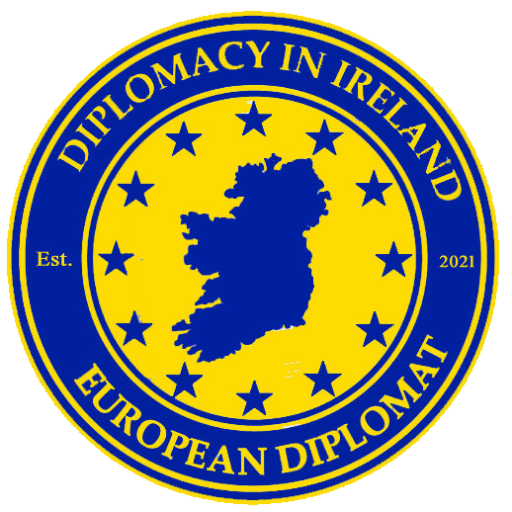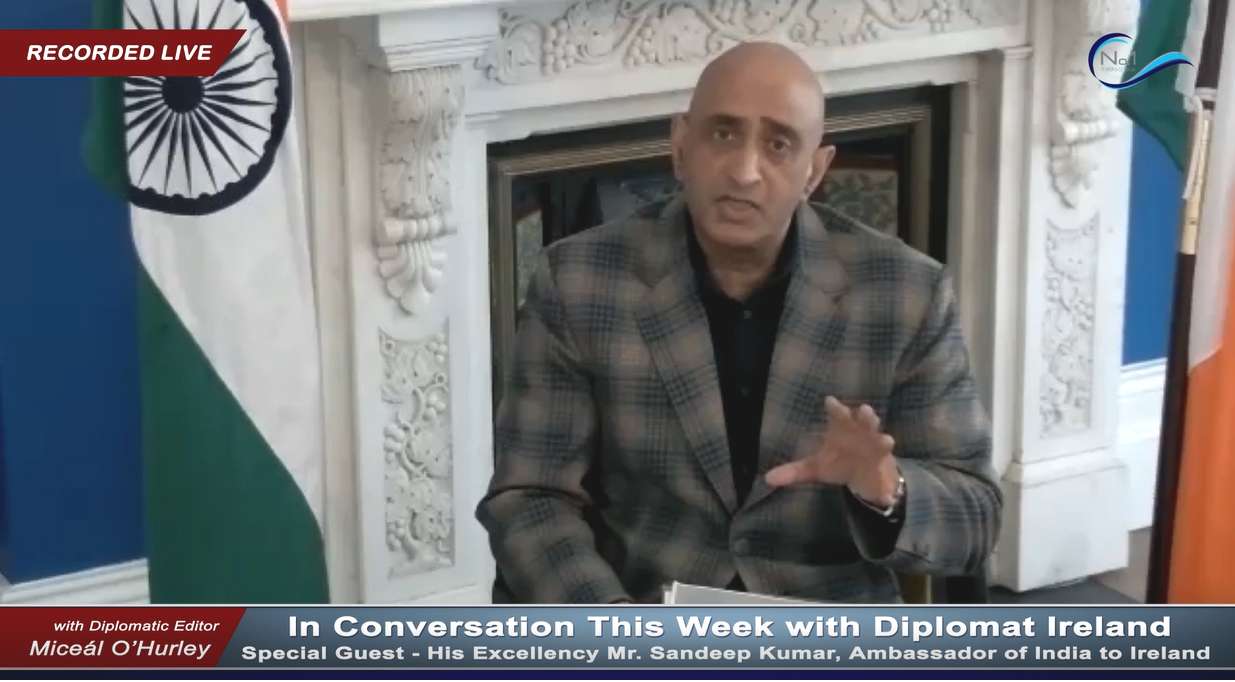by Miceál O’Hurley
KAZAN — Russia President Vladimir Putin relished in his role as host to the 2024 BRICS Summit, held once again in Russia between 22-24 October. The theme for this year’s summit proved as ambitious as it did elusive, ‘Strengthening Multilateralism for Equitable Global Development and Security’. Anxious to attempt to show the world that both he and Russia continue to thrive despite enduring sanctions regimes imposed after Russia’s invasion of Ukraine and unlawful attempts to annex parts of the Ukrainian East and Crimea Peninsula, Putin basked in the adulation of the 16th gathering of BRICS Member States that now represent almost half of the world’s population.
The restricted format event exercised maximum control to ensure it came off with the planning of a well-executed awards show as it reflected entertainment far more than being the policy-making and unity-building forum for which it was originally intended.
BRICS earned its moniker from Goldman Sachs’ then Chief Economist, Jim O’Neil, creating the acronym in 2001 from its organising members – Brazil, Russia, India and China. The group expanded quickly with the addition of South Africa. BRICS now includes Egypt, Ethiopia, the UAE and Iran. However, despite great courting, Saudi Arabia seems to be the bride that stood-up the groom at the altar, attending the forums but not becoming a member.
O’Neil originally forecasted BRICS would dominate the world economies through the next half-century. His early predictions seemed to have been correct as the grouping prospered in the first decade of the new century. Brazil bounced back resiliently from the 2008 global financial crash. Russia’s oil revenue saw its economy buoyant beyond restrained forecasts from most major analysts. India’s GDP growth rate by 2010 had reached 8.50% (compared to a flagging USA rate of only 2.7%). China’s GDP growth rate in 2010 topped 10.6%, while South Africa’s economy showed marked growth from a low of -1.5% to 3% in 2010. Despite the global economic woes following the 2008 crash, BRICS seemed to be forum to join for emerging economies intent on displacing the power of the US Dollar, increasing trade and surging towards an economic and geopolitical bastion of Primakov’s multipolar world model.
Unfortunately, 2010 marked the height of BRICS’ glory days. Its halcyon days were never to be repeated.

Throughout its existence, BRICS has struggled to articulate a common vision beyond its anti-Western bent. The founding States that showed such economic promise early-on have lost their way. The very structures of their economies paired with their geopolitical activities have proven insurmountable obstacles to growth in either sphere. BRICS suffers from a fundamental lack of cohesiveness either economic or geopolitical. The cracks are showing and the chasms are massive. In all, BRICS Members still grossly underperform the G7 economies they were meant to displace.
China’s mixed-socialist market economy has suffered significantly owing in large part to the collapse of the Chinese property market. The Communist Party’s crackdown on entrepreneurs that once drove the economy has further alienated corporate growth. The IMF has forecast a lackluster 4.8% growth rate for 2024 and many economists are voicing concern China may not achieve even that modest benchmark.
Russia has its own woes. With a growth rate projected at a mere 1.8% for 2025, and the recent announcement that in 2025 Russia intends to spend $145B of its total $436B State Budget on defense, economic hardships are being hard-baked into its economic engine. Direct defense spending alone equates to some 6.3% of Russia’s GDP, a high-water mark not reached since the Cold War. This outlay only serves to mask the real problem for Russia as consolidated payments for war-related expenditures across the entire 2025 Russian State Budget push Kremlin expenditures for its war in Ukraine to 9.73% of its entire GDP. It is unsustainable. Considering Russia has already nearly depleted its National Wealth Fund and accumulated a deficit of some $34.2bn in 2023 alone, Russia will soon have no choice but to rely on wildly unpopular measures to sustain its flagging economy in 2025. Given that the Kremlin has almost halved its Fiscal Year 2021 $117bn liquidity position to a mere $55bn the burden on the average Russian by the end of 2025 will become even more oppressive and further restrain the economy while simultaneously placing the regime’s future at risk.
Russia, the centerpiece of BRICS, seems to have not only run out of soldiers on the battlefield in Ukraine necessitating the hiring of un-tested North Korean troops in an attempt to resecue its Kursk region from Ukrainian control but will have to rely on resource trading to keep its economy afloat. Just as the Regan Administration’s ‘Star Wars’ programme caused the Soviet Union to lavishly over-spend on its military-industrial complex in an attempt to survive, costs which helped drive the USSR to dissolve in 1991, Russia’s war in Ukraine threatens to destabilise Putin’s hold on power. A nearly 10% demand on the GDP to sustain its long, drawn-out war in Ukraine will soon force the Kremlin into difficult domestic economic choices that may undermine its attempts at longevity.
Russia has reason to be concerned, as Mark Twain quipped, “If history doesn’t repeat itself, it rhymes”. The tune surely remains in Putin’s head like an earworm. Putin can recall how in 1990, the war in Afghanistan and attempts to outspend the Regan administration plunged the USSR into chaos. The collapsing economy and political structures reduced Putin from being a privileged KGB agent in East Berlin to a part-time taxi-driver in his native Leningrad. Such economic calamity will surely test his ability to maintain his autocratic hold on power as Russia’s woes fall squarely on its only leader’s shoulders.
Regimes like Putin’s are exceptionally sensitive to economic upheaval. In the waning days of the USSR, the depth of the Soviet Union’s lack of liquidity was put on full display in April 1990 when it was revealed that Moscow was forced to service its $3bn debt for Pepsi Cola Concentrate Flavouring by parting with 10 Soviet ships in lieu of cash payment (for almost 2-years, PEPSICO had the 7th largest battleship fleet in the world). While Russia has not fallen that far yet, the failure of BRICS to lift the economy, the pressure has risen that Russia now has little of value to trade except highly sensitive, advanced technology it once denied North Korea and Iran. The need to buy North Korean mercenaries and Iranian Shahed drones leaves Putin with little choice but to soon start parting with the ‘family jewels’, Russian technology, which in and of itself will threaten to destabilise its geopolitical partnerships. Such is the inevitable trajectory of Russia’s ailing economy that BRICS cannot rescue.
Despite the stage-show optics, the 16th BRICS Summit in Kazan, themed ‘Strengthening Multilateralism for Equitable Global Development and Security’ failed to offer its members any real prospects of elevating or growing their economies. The formerly driving economies of China and Russia now represent a drag on BRICS’ prospects for growth and stability. The geopolitical divisions between India’s market economy and China’s command economies, in addition to Russia’s courting of North Korea, promises to alienate of China. China and India’s continuing tensions over economics and long-simmering border conflicts only furthers the intra-BRICS divisions and puts on full-display the fundamental lack of cohesiveness required for an enterprise like BRICS to thrive.
BRICS is now a union of competition and conflict – market and geopolitical. The United Arab Emirates’ inclusion in BRICS is said to be predatory by other BRICS Members, more for the UAE’s exclusive benefit in the banking sector to facilitate what deals are still possible given significant sanctions regimes. Once popular BRICS’ investment funds have struggled in recent years and are now ill-advised by most investment houses. The BRICS format which pits Brazil and Russia against each other as direct competitors in the energy markets has also caused unsteadiness in the forum and continues to alarm the market. The once touted alternative to the International Monetary Fund, BRICS’ New Development Bank, is restricted from making direct loans to Russia and Iran due to sanctions and restricts investment capitalisation with other BRICS partners who trade with them. What then does BRICS have to offer but a forum for anti-Western policy, ideology and criticism?
In all, the Kazan BRICS Summit 2024 seems to have failed to emerge as anything more than a theatre of self-congratulating optics for Putin’s Russia which is anxious not to appear as weak as it actually is. Beyond serving as a ‘mutual admiration society’ for anti-Western leaning States who once envisioned emerging as drivers of the world economy BRICS now serves little purpose than a forum to self-isolate from functional economies and geopolitical players like the G7 which shares multiple points of commonality and enduring reasons for unity.
BRICS Member States will surely be re-assessing their partnerships for self-interest as their attempt to globalise their anti-Western sentiment and subversion of the USD as the standard of economic underpinning has stalled, if not propelled the group towards and inevitable demise, owing to its lack of foundational commonality beyond being disgruntled players on the world stage.
















































